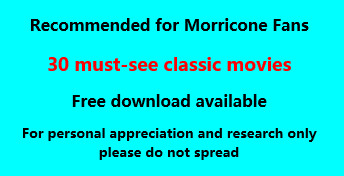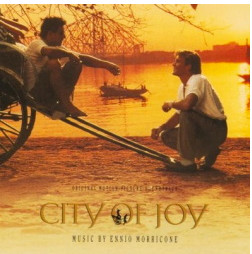THROWBACK THIRTY
Original Review by Jonathan Broxton
The career of British director Roland Joffé is one of the oddest ones in recent cinema; after cutting his teeth making gritty UK TV dramas he gained international critical acclaim and Oscar recognition in 1984 for his film The Killing Fields, about the brutal Khmer Rouge regime in Cambodia in the 1970s, and followed that with what is probably his most famous film, The Mission, in 1986. However, after making several consecutive flops in the late 1980s and 1990s, including things like Fat Man and Little Boy, The Scarlet Letter, and Goodbye Lover, he was eventually reduced to making low-budget ‘torture porn’ horror movies like Captivity, and now hasn’t made a major movie in more than 15 years. Possibly the last good movie Joffé made was this one: City of Joy, from 1992. It stars Patrick Swayze as an American doctor who travels to India in search of ‘spiritual enlightenment’ after a career crisis, and finds himself becoming deeply involved with helping people who live in the slums of Calcutta. The film co-stars Pauline Collins and Om Puri, and was a minor critical success, but is largely forgotten today.
Despite the director’s own spiraling career, one of the best legacies of Roland Joffé’s work is that his films inspired Ennio Morricone to write some of his greatest film music. Joffé and Morricone worked on four films together: The Mission, Fat Man and Little Boy, this one, and Vatel in 2000, and although The Mission is rightly lauded as one of the greatest scores in the history of cinema, the others should not be overlooked either. City of Joy could probably be accurately described as ‘The Mission in India’ – it’s a score that contains several lovely recurring themes, which are presented amid a whole host of traditional instrumental textures from the Indian subcontinent, including such familiar sounds as a sitar, tabla drums, a tambura, and a bansuri flute, along with a standard symphony orchestra and vocalists. It was recorded in both Italy and London and opens with the superb title theme “City of Joy,” an upbeat and rousing piece for orchestra and a staccato, barking chorus with a buoyant recurring melody backed by the unusual-sounding piccolo trumpet. This theme mostly represents Swayze’s character Max Lowe, and his genuinely good-hearted and altruistic nature, caring for the poor of Calcutta.
The second recurring theme, introduced in “The Family of the Poor,” is the theme for Om Puri’s character Hazari Pal, a farmer from a rural part of India who moves to Calcutta with his family in search of a better life but who, as a result of numerous hardships and instances of ill-fortune, ends up living in the slums, and eventually crosses paths with Lowe. This theme is gorgeous, heartbreakingly beautiful in places, but with a sense of inner conviction and fortitude that perfectly encapsulates Hazari’s nature, and his desire to overcome whatever obstacles life throws at him for the benefit of his family, with dignity and resolve. The theme is a showcase for woodwinds – the melody melts dreamily between a piccolo clarinet, a recorder, a flute, and back again – and will appeal to anyone who has ever loved Morricone’s lush, romantic side. It’s not as immediately rapturous as anything in The Mission -what is? – but it has its moments of delicate beauty.
The third recurring theme is the theme for Joan, the kind-hearted Irish nurse who runs the Calcutta clinic within which much of the film takes place, and it gets its most prominent performances in the two cues called “One Night, By Chance.” The theme is soft, intimate, but also a little melancholy, a beautiful duet for strings and breathy woodwinds with the merest hint of a piano, and which speaks to Joan’s character: solid, dependable, non-nonsense but driven by the need to care for others, and with a slightly wistful quality that acknowledges the fact that she cannot save everyone who comes to her ‘city of joy’ – from death, from disease, from poverty, from corruption. This tenderness combined with world-weary realism is excellent, and at times quite moving.
As is often the case with Morricone scores, these themes form the backbone of the score, and receive several reprises and variations as it progresses. For example, in “Hope,” the theme for Max is arranged for a small orchestra of sub-continental instruments alongside the standard ensemble and some rather unusual-sounding keyboards, in a Morricone-style approximation of Indian classical music. This blending of styles from vastly different ethnic backgrounds is fascinating, and the way Morricone allows his melody to remain central to the piece while adorning it with all the unusual tones and textures is very impressive. Elsewhere, in “Monsoon,” the theme is accompanied by sparkling, shimmering metallic textures that sound like the cleansing tones of raindrops, rippling and dancing into the Hooghly river. There are also two additional significant reprises of Hazari’s theme in two further cues, both also called “The Family of the Poor,” the first of which features a superb choral variation that is vintage Morricone.
One or two standalone pieces also impress. The second half of “For a Daughter’s Dowry” features an unexpectedly excellent performance by a solo boy soprano whose vocal timbre combines with idiosyncratic-sounding keyboard textures, while “The Birth” is just sublime, gentle and peaceful and with a lush, elegant sweep to the strings.
Then, on the flip side of the tenderness and beauty, the harshness and brutalism of life in Calcutta is conveyed with several extended sequences of suspense and action music, some of which gets quite dissonant. “Crack Down” eases you in slowly with some moody woodwind writing that actually reminds me a little of 1960s John Barry, but then later cues like “In the Labyrinth,” “A Surgeon in Despair,” the shrill and insistent “Godfather of the Bustee,” the sometimes quite intense “Calcutta,” and the 15-minute sequence comprising “The Worm Turns,” “The Labyrinth,” and “To Calcutta” are much darker, using nervous-sounding rattling percussion ideas, stark orchestral passages, and other dissonant textures, to convey some of the unsavory aspects of the story involving thieves, unscrupulous landlords, organized criminals, and more.
The final reprise of the main theme in “For Roland” is lovely, and provides a nice coda for what is one of Ennio Morricone’s most overlooked and underrated scores of the 1990s. Look, when you have the type of career that Ennio Morricone had, with so many iconic themes and all-time great scores under your belt, it’s inevitable that so much work ends up flying under the radar. This goes double for something like City of Joy, whose closeness in time and style and collaborative content to The Mission would make any score pale in comparison – and, yes, it does. There’s no getting around that fact. But despite that, City of Joy is still well worth exploring if you’re a fan of Morricone’s work; the main themes are genuinely lovely, some of the action and suspense music is interesting, and the film’s geographic setting gave the composer to explore some instruments and sounds that didn’t often feature in his work, and that alone makes it a score of note.
Buy the City of Joy soundtrack from the Movie Music UK Store
Track Listing:
- City of Joy (2:10)
- The Family of the Poor (2:40)
- One Night, By Chance (3:39)
- Crack Down (3:21)
- Hope (2:20)
- In the Labyrinth (1:44)
- The Family of the Poor (2:10)
- A Surgeon in Despair (2:24)
- One Night, By Chance (1:48)
- For a Daughter’s Dowry (4:00)
- Godfather of the Bustee (2:28)
- Monsoon (2:10)
- Calcutta (4:20)
- Bustee Day (1:40)
- The Birth (2:17)
- The Worm Turns (3:52)
- The Labyrinth (5:40)
- To Calcutta (6:50)
- The Family of the Poor (1:37)
- To Roland (1:51)
Running Time: 58 minutes 41 seconds
Epic Records EK-52750 (1992)
Music composed and conducted by Ennio Morricone. Orchestrations by Ennio Morricone. Recorded and mixed by Franco Patrignani and Dick Lewzey. Edited by Joe Illing. Album produced by Ennio Morricone and Enrico de Melis.












